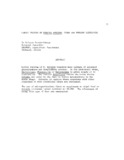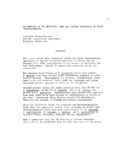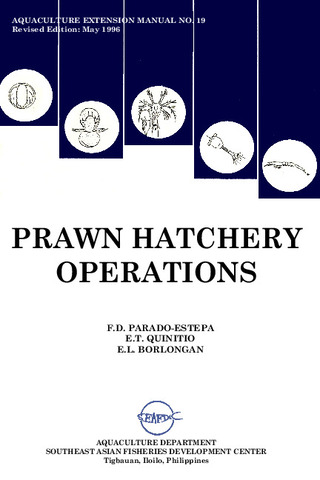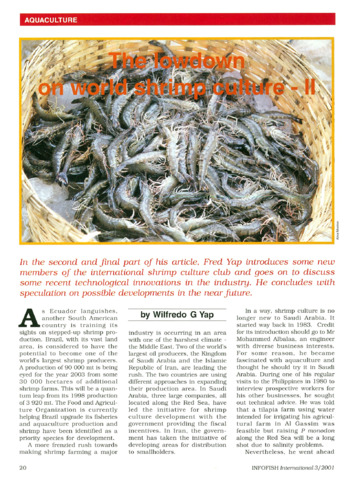Larval rearing of Penaeus monodon: Feeds and feeding techniques
- Global styles
- MLA
- Vancouver
- Elsevier - Harvard
- APA
- Help

View/
Date
1989Author
Page views
3,730ASFA keyword
AGROVOC keyword
Taxonomic term
Metadata
Show full item record
Share
Abstract
Larval rearing of P.monodon requires mass culture of selected phytoplankton and zooplankton species. In the protozocal stage, Skelatonoma; Chaetoceros or Tetraselmis is given singly or in combination. The rotifer Brachionus and/or the brine shrimp ArTEMI are added to the diet as larvae metamorphose to the mysis stage. Attempts to replace these organisms with other organisms or with artificial diets are discussed.
The use of microparticulate diets as supplement to algal food or Artema increases larval survival to 30-70%. The advantages of using this type of diet are enumerated.
Suggested Citation
Parado-Estepa, F. D. (1989). Larval rearing of Penaeus monodon: Feeds and feeding techniques. In R. D. Fortes, L. C. Darvin, & D. L. de Guzman (Eds.), Fish and Crustacean Feeds and Nutrition. Proceedings of the Seminar-Workshop on Fish and Crustacean Feeds and Nutrition, University of the Philippines in the Visayas (UPV), Iloilo City, 25-26 February 1985. (pp. 21–23). Los Baños, Laguna, Philippines: Philippine Council for Aquatic and Marine Research and Development.
Type
Conference paperCollections
- Conference Proceedings [299]
Related items
Showing items related by title, author, creator and subject.
-
An overview of the nutrition, feed and feeding techniques of prawn penaeid/shrimps
Piedad-Pascual, Felicitas (Philippine Council for Aquatic and Marine Research and Development, 1989)This paper echoes what transpired during the first International Conference of Penaeid Prawns/Shrimps held in Iloilo City in December 4-7, 1984, particularly on the Nutrition nd Feed Development. Around 25 papers were ... -
Series: Aquaculture extension manual; No. 19
Prawn hatchery operations
Parado-Estepa, Fe D.; Quinitio, Emilia T. ; Borlongan, Emeterio L. (Aquaculture Department, Southeast Asian Fisheries Development Center, 1996-05)
The manual, an updated version of the 1984 SEAFDEC/AQD manual, presents the underlying principles and step-by-step instructions of prawn larval and post-larval rearing. The techniques described are not only applicable to ...
; Borlongan, Emeterio L. (Aquaculture Department, Southeast Asian Fisheries Development Center, 1996-05)
The manual, an updated version of the 1984 SEAFDEC/AQD manual, presents the underlying principles and step-by-step instructions of prawn larval and post-larval rearing. The techniques described are not only applicable to ... -
The lowdown on world shrimp culture - II
Yap, Wilfredo G. (INFOFISH, 2001)This paper introduces some new members of the international shrimp culture club and goes on to discuss some recent technological innovations in the industry, particularly the polyculture of tilapia (mainly Oreochromis ...





